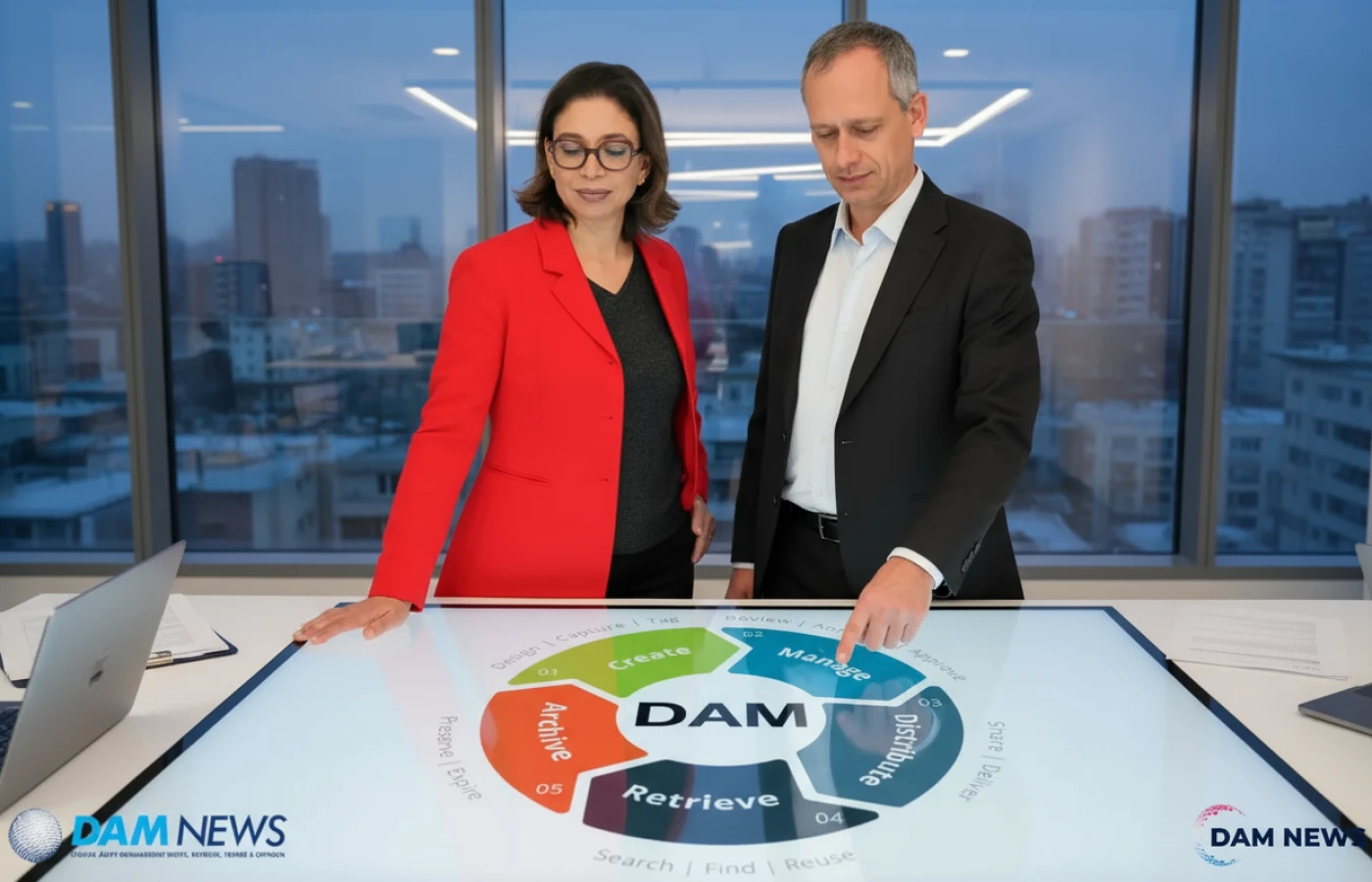
An enterprise portal CMS goes beyond a basic website CMS by supporting multiple sites, languages and channels, while integrating with DAM, PIM, CRM and ERP systems. It offers structured content models, robust workflows, security, personalization and flexible architectures like headless and composable CMS. Selecting the right platform involves assessing business goals, integration needs and scalability.
The digital transformation of large organizations has profoundly changed how enterprises manage and deliver content. In the early days of the web, many businesses relied on simple content management systems (CMS) to power informational websites. Those systems were typically designed for a single website and focused on straightforward content publishing workflows. Today’s enterprises, however, operate on a completely different scale. They maintain dozens or even hundreds of sites across multiple regions and languages, connect with customers through websites, mobile apps, voice assistants, social media and digital signage, and coordinate marketing campaigns that span departments and business units. These companies must also integrate data and processes from customer relationship management (CRM), enterprise resource planning (ERP), product information management (PIM) and digital asset management (DAM) systems to provide cohesive digital experiences.
To meet these demands, enterprises need a sophisticated content platform that goes far beyond the capabilities of a traditional CMS. An enterprise portal CMS is a comprehensive content management solution designed to support complex digital ecosystems. It offers the flexibility to deliver content across multiple channels, robust security features, scalable infrastructure, advanced personalization, integration with back‑office systems and tools for governance, localization and workflow automation. This article explores what sets an enterprise portal CMS apart from a typical website CMS, examines its core components, explains how it integrates with PIM, DAM and other enterprise systems, and outlines best practices for selecting and implementing a modern platform. We also compare different architectural models—monolithic, headless and composable—and discuss how enterprises can evaluate which approach best aligns with their digital strategy. By understanding these elements, organizations can make informed decisions and unlock the full potential of their content operations.
An enterprise portal CMS is a content management system built specifically for large and complex organizations. It manages not just a single website, but a constellation of digital experiences—websites, mobile apps, e‑commerce storefronts, customer portals, intranets and digital kiosks—all from a centralized platform. Unlike traditional CMS platforms, which typically handle a single website and rely on page‑centric content structures, an enterprise portal CMS supports:
An enterprise portal CMS functions as both a content repository—storing structured content and assets—and a digital experience hub—orchestrating interactions across touchpoints. It provides tools for content authors, marketers, developers and administrators to collaborate effectively while maintaining governance over digital properties. The platform’s extensibility allows businesses to integrate disparate data sources and systems, enabling unified experiences and streamlined operations.
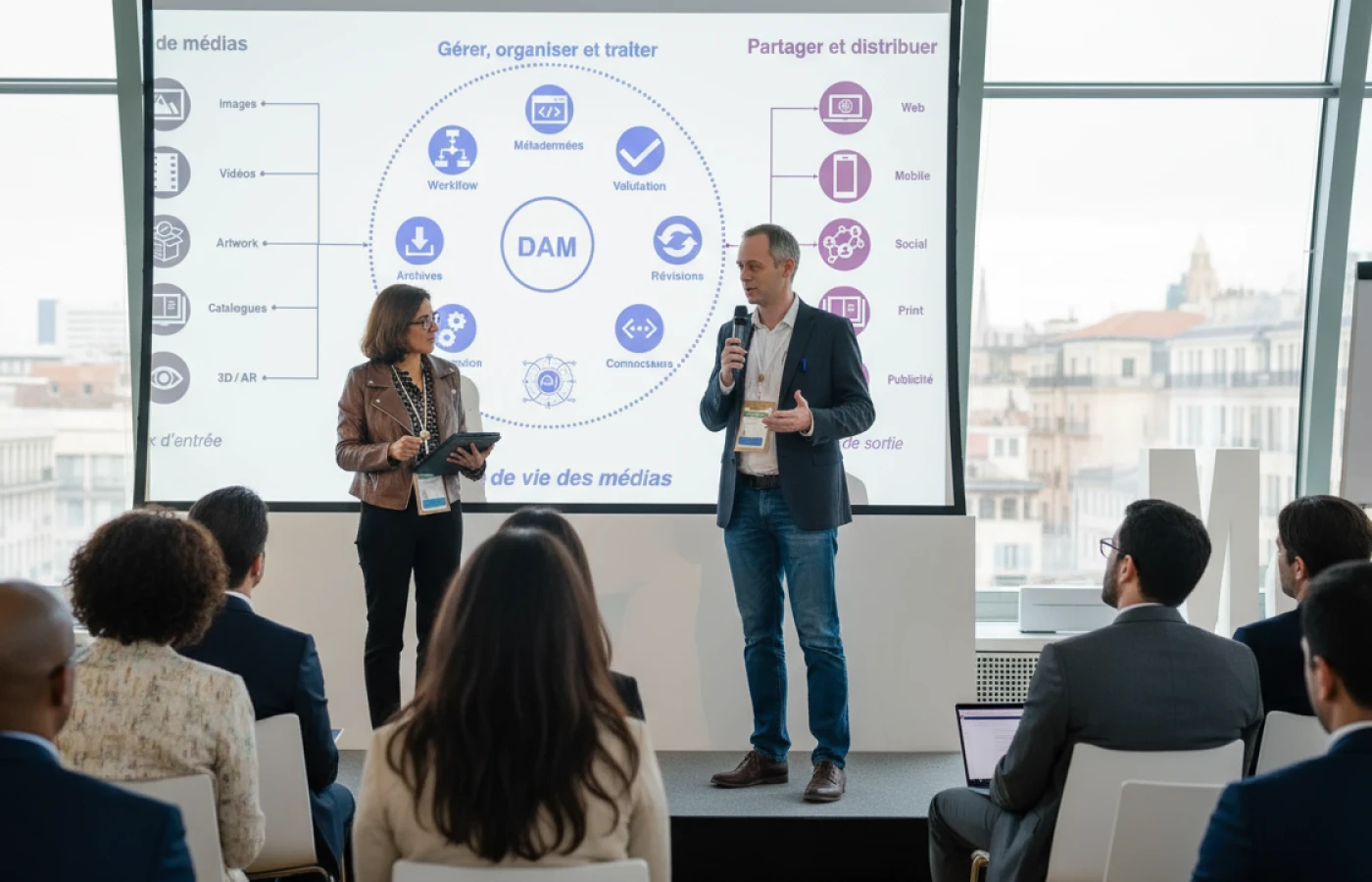
Traditional CMS platforms were designed to manage websites. They store content in a page‑oriented structure, combine content and presentation tightly, and typically limit delivery to HTML pages rendered for a web browser. While they work well for small or medium‑sized websites, they struggle to meet the needs of large enterprises with complex digital footprints. According to Optimizely, enterprise CMS platforms extend beyond traditional systems by supporting complex websites, customized workflows, personalization and localization, AI assistance, automation, governance and security. The differences can be summarized as follows:
Traditional CMSs often impose rigid templates and workflows, making it difficult to customize functionality or integrate new technologies. An enterprise CMS can be customized to suit business‑specific needs. Administrators can extend content models, define custom workflows and implement bespoke features without compromising core stability. APIs provide hooks for connecting to other systems, and plug‑in architectures allow third‑party integrations.
Whereas traditional CMSs primarily publish web pages, enterprise CMS platforms deliver content across a variety of channels. They push content to apps, voice assistants, IoT devices and digital signage, ensuring a consistent brand experience across touchpoints. This multi‑channel capability is essential for enterprises that engage customers on diverse platforms.
Enterprise CMSs incorporate advanced security features, encryption, access controls and compliance tools that traditional CMSs often lack. They provide granular permission management, enabling administrators to set roles and privileges at the level of users, groups, content types and workflows. Single sign‑on integration ensures secure and convenient authentication across systems.
Enterprise CMS platforms support complex workflows for content creation, editing, approval and publication. Automated workflows streamline multistage approval processes and foster collaboration. Permissions management allows content owners to control who can edit or publish specific items. Governance features enforce style guidelines, metadata schemas and content policies across numerous sites and teams.
Large enterprises manage immense volumes of content, traffic and data. Enterprise CMSs must scale seamlessly to handle increasing demands. Cloud‑native architectures, content delivery networks (CDNs) and autoscaling ensure high availability and low latency, even during peak traffic or campaigns.
Traditional CMS platforms may include basic plug‑ins, but enterprise CMSs are built with integration in mind. They offer APIs and connectors to integrate with CRM, ERP, PIM, DAM, marketing automation and analytics systems. This integration ensures that content remains synchronized with business data and processes, enabling unified digital experiences.
Enterprises often operate numerous websites and microsites across regions and languages. An enterprise CMS simplifies management by allowing multiple sites to be created from common templates and content repositories. Built‑in localization tools support translation workflows, locale‑specific content and multi‑language publishing. This unified approach reduces duplication and ensures brand consistency across markets.
Enterprise CMS platforms incorporate personalization engines that use behavioral data, segmentation and AI to deliver targeted content to different audiences. They may use recommendation algorithms, segmentation rules or integration with customer data platforms to create tailored experiences. AI also assists in content creation, optimization and accessibility checks.
In summary, while traditional CMS platforms are suitable for simpler websites, enterprise portal CMS solutions offer the flexibility, scalability, security and integration capabilities required to orchestrate complex digital experiences across multiple channels and systems.
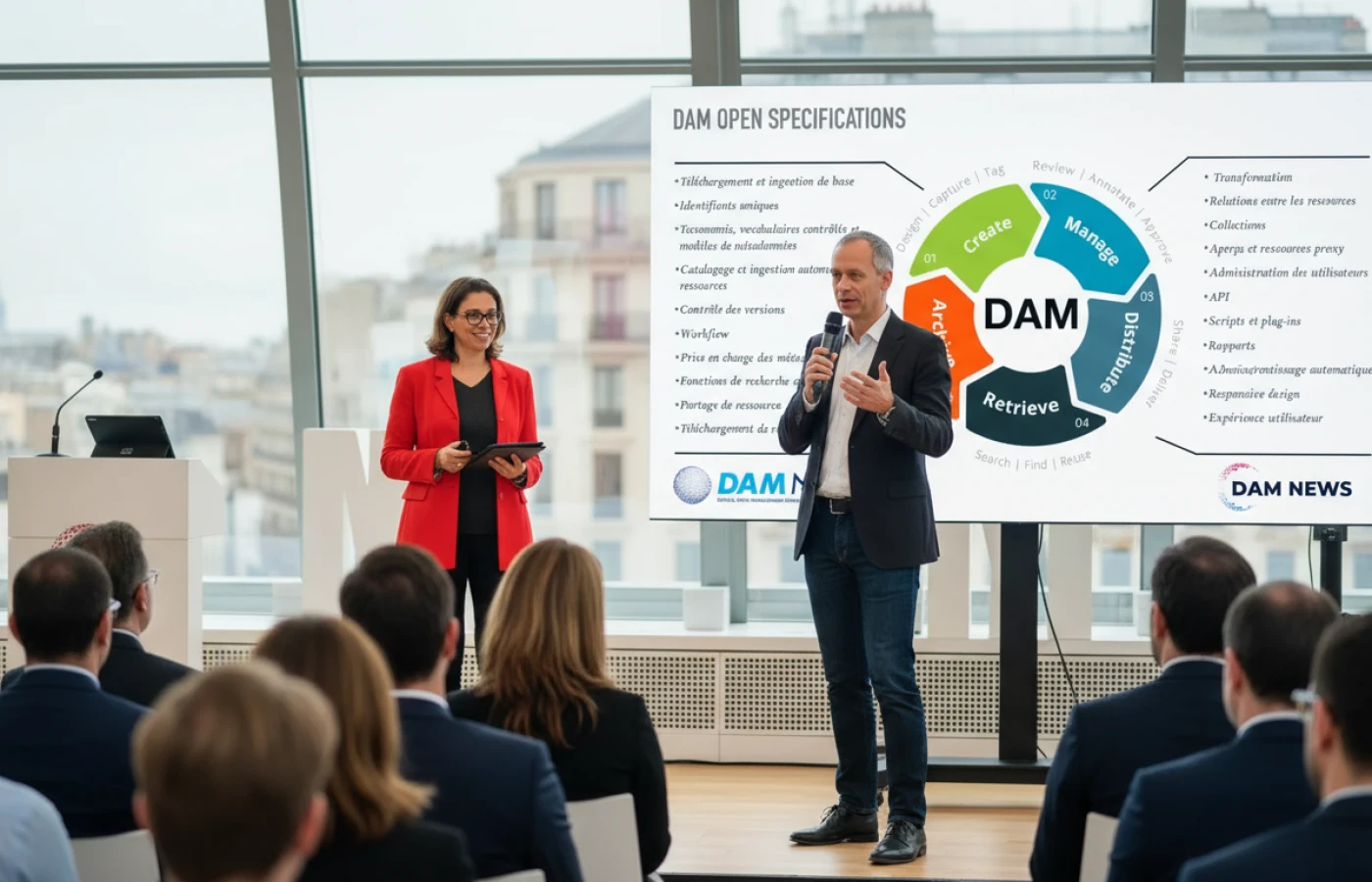
A comprehensive enterprise portal CMS comprises a collection of components and services that together enable organizations to create, manage, deliver and govern digital content at scale. Below are core components that underpin a modern enterprise CMS.
At the heart of any CMS lies its content repository—a structured database that stores content and metadata. In an enterprise portal CMS, the repository must support rich content types, hierarchical taxonomies and field‑level metadata. Content is stored as modular components rather than monolithic pages. This enables reuse of content across different sites and channels and facilitates dynamic assembly. The repository is typically API‑driven, allowing external systems to query and update content via REST or GraphQL APIs. High‑performance indexing ensures fast retrieval and search across large datasets.
Enterprises involve diverse teams—marketers, editors, designers, developers, translators, compliance officers, region managers and external agencies—each with specific permissions. The user and role management component defines granular access controls. Administrators can assign roles (e.g., author, editor, reviewer, publisher, administrator) and set permissions at the level of content types, sections, fields and workflows. Integration with corporate identity providers (LDAP, Active Directory, SAML, OAuth) enables single sign‑on and unified account management. Permissions can also govern API usage to ensure secure integration with other systems.
Large organizations require structured workflows to maintain quality, compliance and accountability. Workflow engines allow administrators to define content lifecycle stages—drafting, review, approval, translation, publishing, archiving—and assign tasks to specific roles. Automated notifications prompt reviewers to take action. Governance tools enforce metadata standards, style guides and content policies. Some systems provide governance dashboards that surface exceptions, such as missing metadata or expired content. Scheduled publishing and release orchestration allow teams to coordinate simultaneous launches across regions and channels.
While headless and composable architectures decouple content from presentation, many enterprise CMS platforms provide templating capabilities for websites and portals. Template engines allow designers to define page layouts, components, and responsive designs while separating structure from data. Developers can leverage frameworks or front‑end technologies (React, Vue, Angular) to build custom user experiences. The presentation layer interacts with the content repository via APIs, retrieving structured content and rendering it for different devices and contexts.
Personalization engines analyze user data—demographics, behavior, preferences, location—and use rules or machine learning to deliver tailored content. They might integrate with a customer data platform (CDP) or CRM system to access customer profiles and segments. The personalization engine then selects content variations or orchestrates experiences according to audience segments. AI‑driven personalization can adapt in real time, adjusting content based on user actions. This increases engagement, conversion and customer satisfaction.
Powerful search functionality is essential for both internal users and external audiences. Internally, content creators need to locate reusable assets quickly. Externally, visitors expect relevant results and faceted navigation. Enterprise CMSs use indexing technologies such as Elasticsearch or Solr to index content and metadata. They support advanced search capabilities—autocomplete, synonyms, fuzzy matching, faceted filters—and integrate search analytics to improve relevance. Navigation components support hierarchical menus, tag‑based navigation and recommendation features.
Enterprise CMSs handle text and structured data, but they rely on DAM systems to store images, videos, audio files and documents. Integrating a DAM ensures that rich media assets are managed, tagged and delivered efficiently. CMS integrations allow authors to browse the DAM library within the CMS interface, insert approved assets into content and track usage rights. When integrated properly, the DAM acts as a single source of truth for all media, and the CMS can automatically generate optimized renditions for different devices or channels.
For organizations that sell products or have catalog‑driven content, integrating a PIM system is critical. The PIM stores authoritative product data—names, descriptions, specifications, pricing, SKUs, images and attributes. A modern enterprise CMS connects to the PIM via stable IDs and references, pulling in product information on demand rather than duplicating it. This integration ensures consistency across e‑commerce sites, marketplaces, marketing pages and customer portals. It also enables marketers to create content that references product data without manual reentry. Best practices include defining canonical product reference types, storing system‑of‑record keys and separating editorial copy from operational facts.
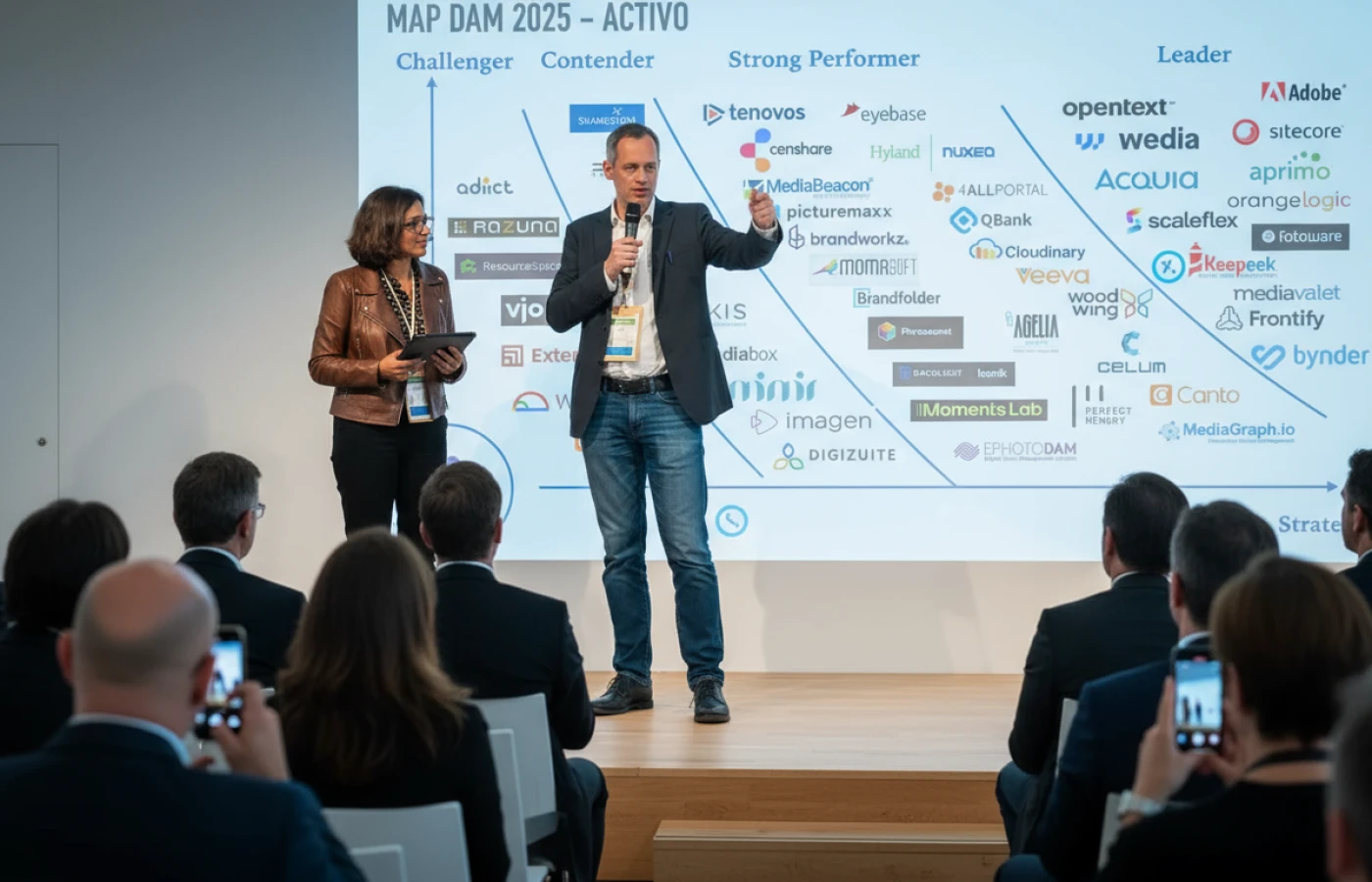
Measurement is essential to improve content performance and understand user behavior. Enterprise CMS platforms either include built‑in analytics dashboards or integrate with analytics solutions. They track page views, conversions, click paths, search queries, personalization engagement, content usage across regions and devices, and contribution metrics. Content insights help marketers optimize campaigns, identify content gaps and experiment with new formats. At a governance level, analytics highlight publication bottlenecks, workflow efficiency and system adoption.
A robust integration layer is the backbone of an enterprise portal CMS. It exposes APIs for interacting with the content repository, user management, workflows and personalization engines. The layer includes webhooks, event notifications and serverless functions that allow other systems to subscribe to content changes. It can connect to CRM, ERP, PIM, DAM, marketing automation and e‑commerce systems. Modern integration architectures use event‑driven patterns and message queues to synchronize data across platforms and provide near real‑time updates. Secure authentication mechanisms, rate limiting and schema validation ensure reliable integration.
Enterprises often operate multiple sites—corporate websites, brand sites, microsites, partner portals, regional sites, intranets—each with its own branding and content. Managing these within a single CMS simplifies governance and reuse. Multisite features allow administrators to create site hierarchies, share templates and components, and manage localized versions of content. Localization tools support translation workflows, locale detection, fallback rules and translation memory. They allow content to be duplicated or shared across languages, with separate workflows and approvals. Localization ensures that global audiences receive content in their preferred language while maintaining brand consistency.
Given the complexity of enterprise systems, developers need tools and SDKs to integrate the CMS into custom applications. These might include CLI tools to scaffold projects, language‑specific SDKs (JavaScript, Java, .NET, Python), plugin frameworks, GraphQL endpoints and sample code. Developers can build custom integrations, automate tasks, extend workflows and create microservices that interact with the CMS. Comprehensive documentation and developer communities are essential to support innovation.
Digital asset management (DAM) and product information management (PIM) systems are critical components of the digital supply chain. Integrating them with the CMS ensures that images, videos and product data remain consistent across all channels. Below, we outline why integration matters and how enterprises can achieve seamless connectivity.
A DAM system centralizes rich media assets, making them searchable and reusable. Without integration, authors may download assets from the DAM and upload them into the CMS manually, leading to version mismatches and rights issues. An integrated DAM allows content authors to browse the media library within the CMS, select approved assets, automatically insert them into templates and track their usage. When assets are updated in the DAM (for example, a product image is replaced), the CMS reflects the change across all pages using that asset. Integration also enables automated rendition generation (thumbnails, responsive images, videos) and ensures that rights and usage information accompany the asset into the CMS.
A PIM system stores authoritative product information, which must be reflected accurately across marketing materials, e‑commerce sites and customer portals. Integrating PIM with the CMS eliminates manual data entry and ensures that product attributes remain consistent. A composable content model can reference product data via stable IDs, pulling in names, descriptions, prices and specifications on demand. Real‑time APIs or scheduled synchronizations maintain consistency when product data changes. Integration also allows marketers to enrich product content with editorial descriptions, images and promotional messaging without duplicating core data.
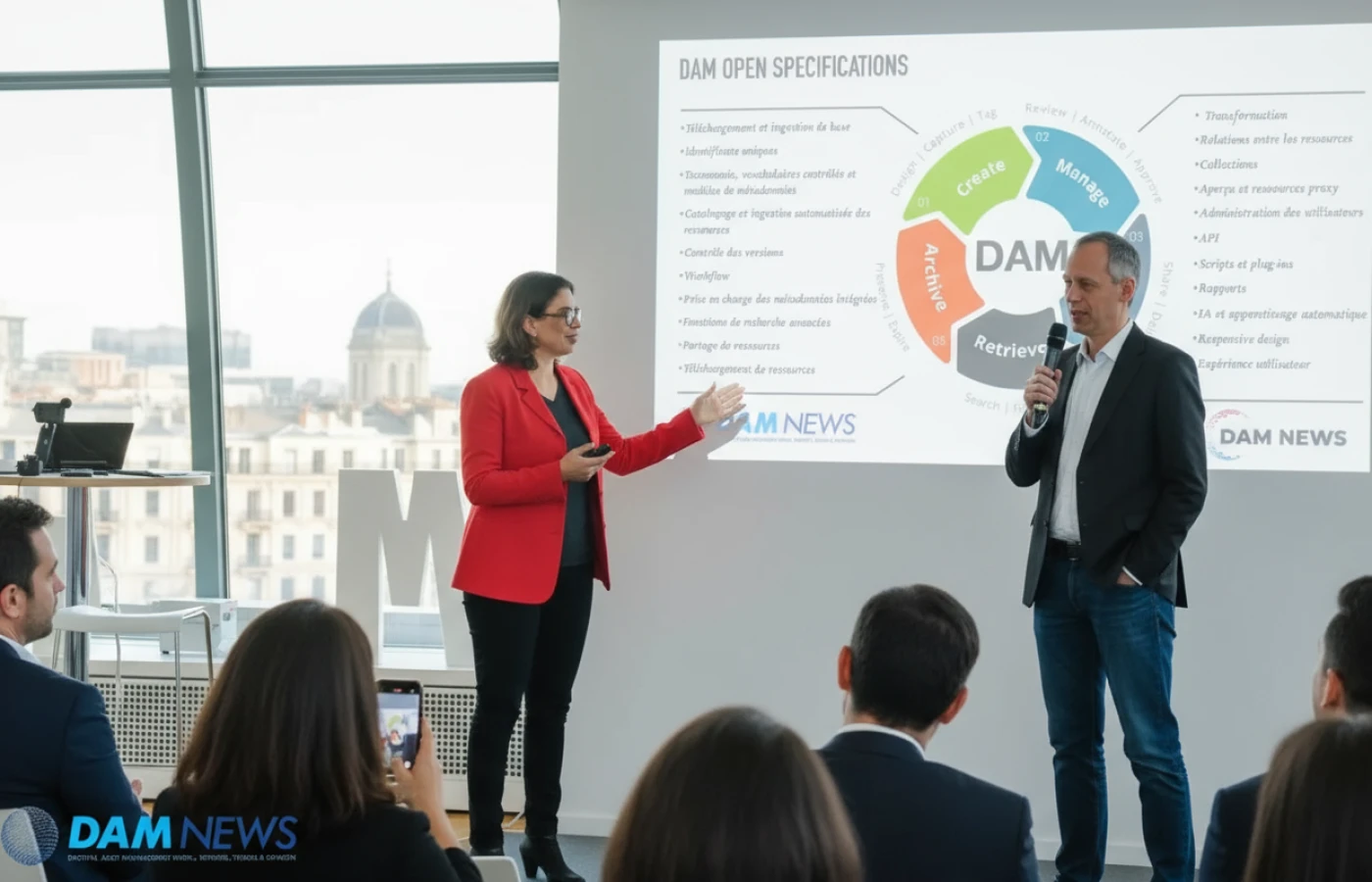
Traditional integration approaches often involve nightly batch processes or file exports, which introduce latency and risk data drift. Modern enterprise CMSs adopt event‑driven architectures. For instance:
By implementing these practices, enterprises can maintain authoritative data sources while enabling flexible and integrated content experiences.
Beyond DAM and PIM systems, enterprises rely on a wide range of back‑office systems to manage customers, orders, inventory, logistics and financials. Integrating an enterprise CMS with CRM, ERP and e‑commerce platforms is essential to provide personalized, contextual and transactional experiences. Below we discuss why these integrations matter and how to approach them.
A CRM system stores customer profiles, interaction histories, preferences and segmentation data. Connecting CRM to the CMS allows marketers to personalize content based on audience segments. For example, the CMS can show different hero banners or promotions depending on a visitor’s segment or past purchases. Integration enables the CMS to push behavioral data back to the CRM, enriching customer profiles for better targeting. Authentication integration (e.g., single sign‑on) provides unified access across portals and ensures consistent user experiences. Event‑driven patterns keep customer data synchronized in near real time, allowing dynamic personalization and analytics.
ERP systems manage product inventory, pricing, orders, shipping and financial data. By integrating ERP with the CMS, enterprises can display accurate stock levels, dynamic pricing, tax calculations and shipping options on their sites. This integration ensures that product pages reflect current inventory and price adjustments. It also allows customers to view order statuses, invoices and returns through self‑service portals. Integration can follow a hybrid model: the CMS calls ERP services at read time for real‑time data, while caching non‑critical data in the CMS for performance. Event triggers update content when ERP data changes (e.g., when a product becomes out of stock).
Many enterprises operate e‑commerce storefronts or B2B portals. Integrating e‑commerce platforms (such as Magento, Shopify Plus, Salesforce Commerce Cloud) with the CMS allows for unified product catalog management, consistent content and synchronized promotions. The CMS can handle brand storytelling, educational content and campaigns, while the e‑commerce engine manages cart, checkout, payments and order management. Integration typically involves product catalog synchronization (via PIM), shared customer accounts (via CRM), order data feeds and promotional rules. APIs facilitate real‑time experiences like personalized product recommendations, cross‑sell and up‑sell features.
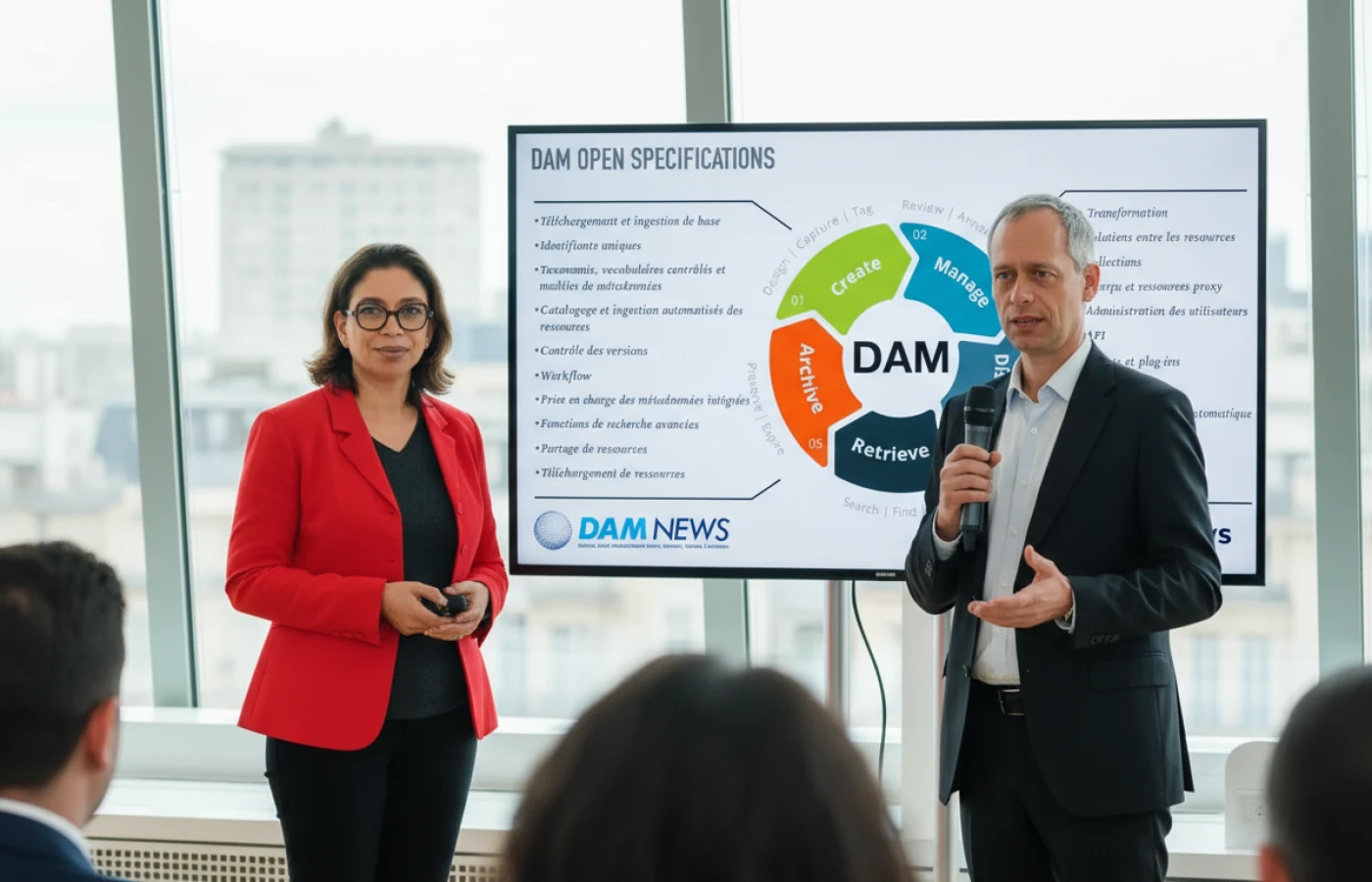
Many large organizations operate multiple websites targeting different regions, brands or business units. In addition, they may need to deliver content in multiple languages to reach global audiences. A modern enterprise CMS must provide native support for multi‑site and multilingual content delivery.
Multi‑site capabilities allow administrators to manage multiple sites within a single CMS instance. Each site can have its own domain, branding, templates and content structure, but share common assets, components and metadata. Administrators can:
Localization features enable content authors to create and manage content in multiple languages within the same content model. Key multilingual features include:
/en/products/, /de/produkte/), and handles hreflang tags for search engine optimization.Effective multi‑site and multilingual management reduces duplication of effort, increases consistency and ensures a coordinated brand presence across global markets. Enterprises should define clear governance policies for content ownership, translation management and localized updates.

The architecture of a CMS determines how content is managed and delivered. Three main architectural models exist—monolithic, headless and composable. Understanding these models helps organizations select the right platform for their needs.
A monolithic CMS bundles content management, templating, business logic and delivery into a single system. It functions like an all‑in‑one department store, where all features—content editing, templates, e‑commerce, search—are built and maintained within one codebase. Monolithic systems offer simplicity and consistency because components are tightly integrated and designed to work together. They can be highly optimized for performance when the scope is limited. However, this architecture poses several challenges:
Monolithic CMSs may be suitable for smaller projects or organizations with simple requirements and limited digital channels. They provide an out‑of‑the‑box solution with less initial complexity. However, as digital needs grow, monolithic platforms become restrictive.
A headless CMS decouples content management from content delivery. Content is stored in a backend repository, and the presentation layer (website, mobile app, digital display) is delivered through APIs. Headless architecture allows the front end to be developed independently of the back end, enabling greater flexibility and customization. Benefits include:
However, headless CMS platforms often require additional components for personalization, search, e‑commerce and analytics. Organizations must assemble and integrate these services, which can increase complexity.
A composable CMS builds on the headless concept but provides a more modular and extensible architecture. It orchestrates packaged business capabilities (PBCs)—independent components for content, search, commerce, personalization, analytics and more—through APIs and microservices. Each PBC can be independently replaced, upgraded or scaled. Key attributes include:
Composable architecture requires careful orchestration and coordination, including data integration, identity management and unified workflows. It often relies on event‑driven messaging and API management. A composable CMS is well suited for large enterprises with complex requirements, multiple customer touchpoints and the resources to manage a modular ecosystem.
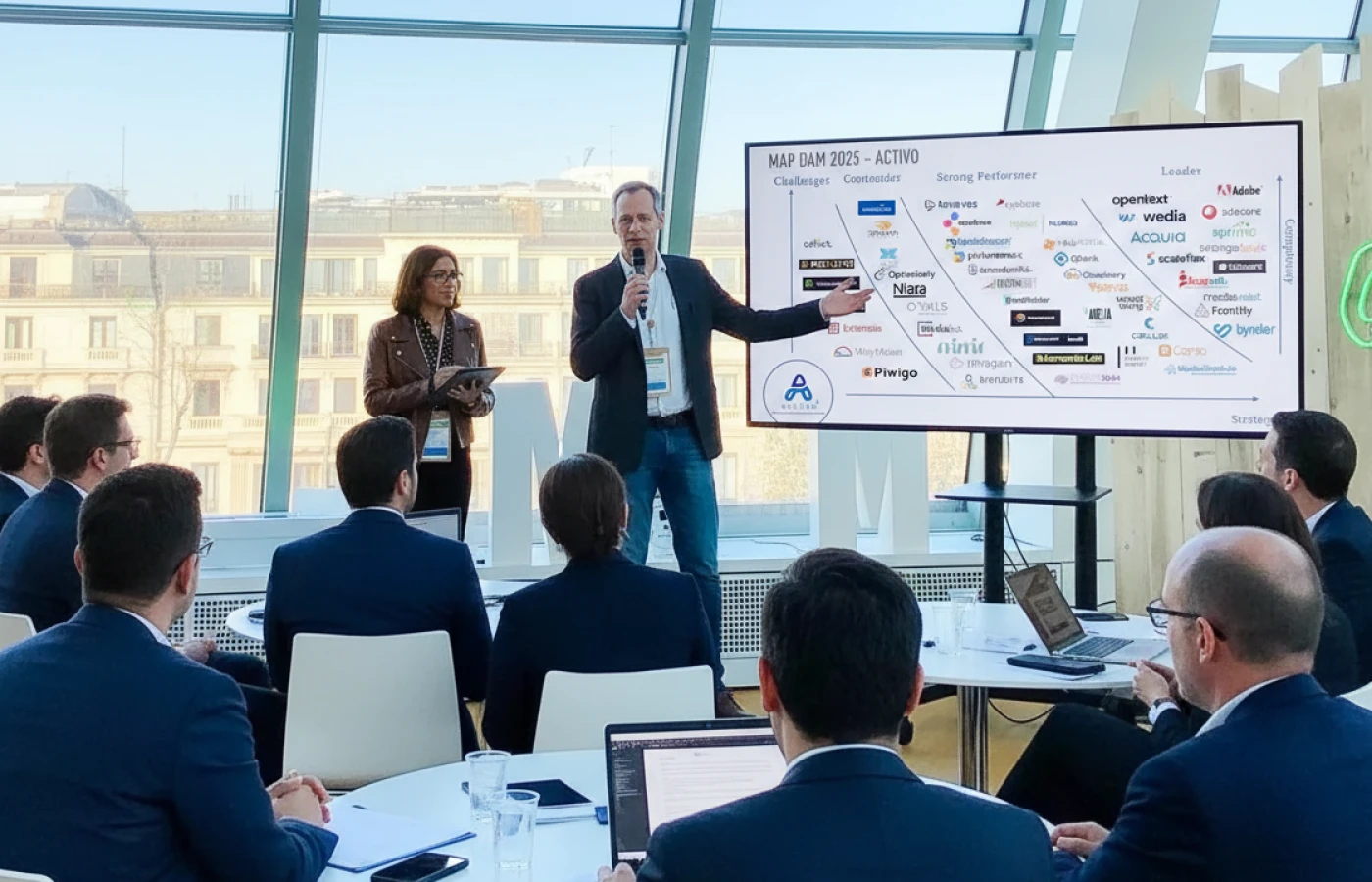
The choice between monolithic, headless and composable architectures depends on business goals, technical maturity and resources. Consider the following factors:
Integrating a CMS with other enterprise systems is critical for delivering consistent and personalized digital experiences. Below are best practices drawn from real‑world implementations and expert guidance:
Traditional page‑oriented CMSs often duplicate data from other systems. To avoid drift and rework, model content as structured data and link it to authoritative records in ERP, CRM and PIM systems using stable identifiers. A content schema should mirror business entities, such as products, customers or regions, and include reference fields that point to external records. This approach ensures that content remains synchronized with changes in the source systems and reduces duplication.
Polling external systems or running nightly batches can lead to stale data and unnecessary processing. Instead, adopt event‑driven integration patterns: subscribe to events emitted by upstream systems (e.g., product updates, price changes, customer profile updates) and trigger updates in the CMS. Serverless functions or integration services process events and update content accordingly. For delivering experiences, use low‑latency APIs to assemble content and business data on demand. This combination ensures up‑to‑date information and reduces heavy data synchronization.
Launching campaigns that involve content, pricing and promotions requires coordination. Use preview capabilities to view content with updated data in draft or release states. Schedule publishing to coordinate multi‑region or multi‑channel launches. Release orchestration tools allow teams to group related changes and schedule them as a cohesive set, ensuring that content and data updates go live simultaneously across all channels.
When integrated content contains incorrect data, editors need to trace where it came from. Use source maps or metadata links to map rendered content back to specific fields in the CMS, PIM or CRM systems. Observability tools enable editors to click and edit at the source, reducing debugging time. Logging and monitoring systems track integration events, API performance and error rates, providing insights for continuous improvement.
Integrations span multiple brands and regions, each with different permissions and compliance requirements. Use centralized role‑based access control (RBAC) and organization‑level API tokens to manage service access. Ensure that integration services adhere to least‑privilege principles, separating read and write access. Audit logs and access controls help maintain compliance with data privacy regulations.
Data quality issues often originate at the source. Validate external references when content is created to ensure they point to existing records. Enforce mandatory fields and field types. Use transformation functions to normalize and enrich data at render time, applying localization, currency conversion or formatting. Keep transformation logic versioned alongside content schemas.
Implementing a modern enterprise CMS and integrating it with other systems involves change across people, processes and technology. Change management best practices include:
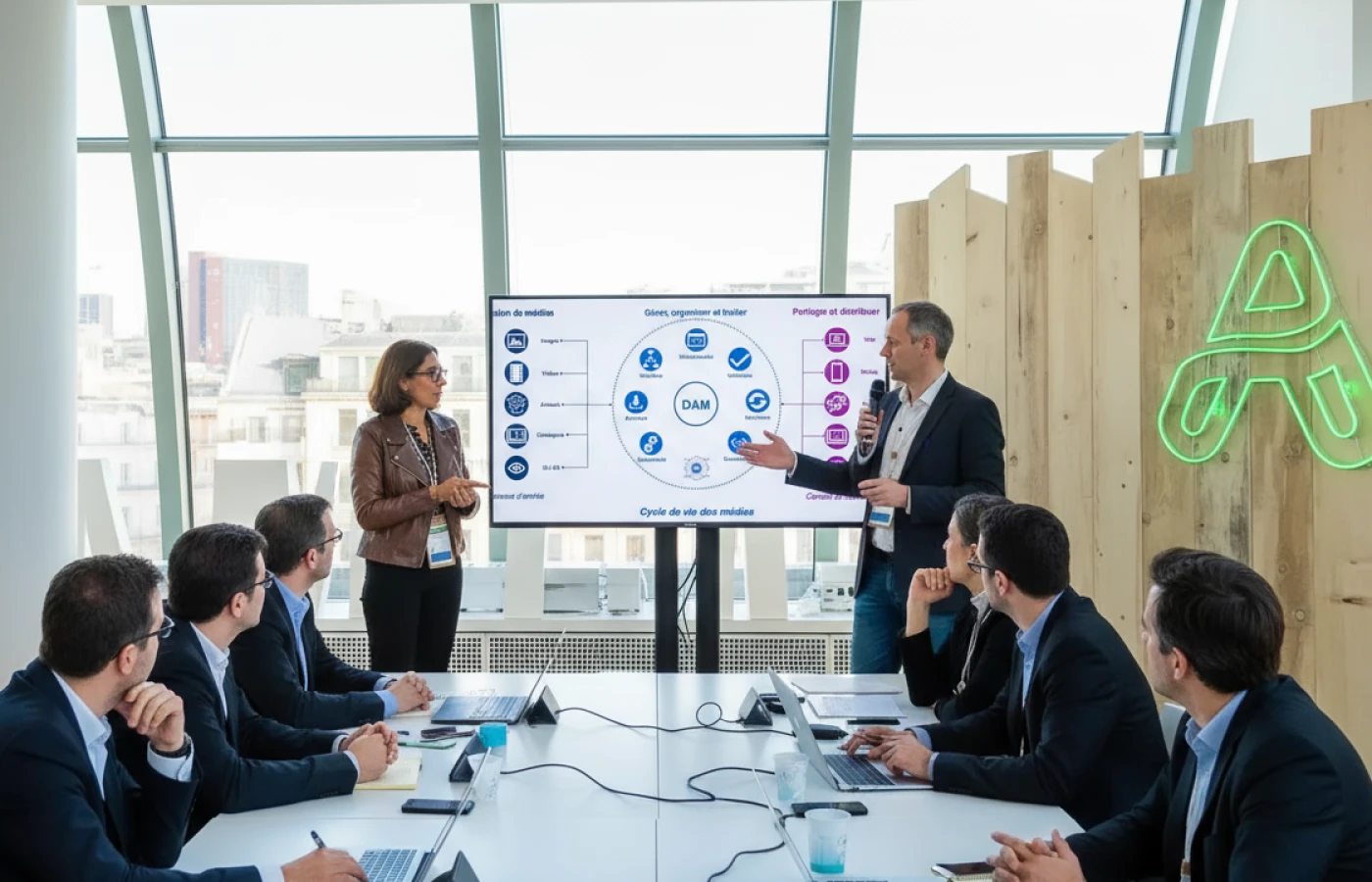
Choosing the right enterprise CMS is a strategic decision that involves assessing organizational needs, technical requirements and vendor capabilities. Below is a structured approach to selection:
By following this approach, enterprises can choose a CMS that aligns with their objectives, integrates seamlessly with existing systems and scales to support future growth.
Implementing an enterprise portal CMS is a complex undertaking. Organizations often encounter challenges during deployment and adoption. Below are common challenges and strategies to overcome them:
Without clear objectives, projects can drift or lose momentum. Define specific goals (e.g., reduce time to publish by 50%, support 10 languages, integrate with PIM and DAM) and assign ownership across business and technical stakeholders. Executive sponsorship ensures alignment and accountability.
New platforms disrupt established workflows. Users may resist adopting new tools or processes. Address this by communicating the benefits clearly (e.g., reduced manual tasks, improved content discovery), involving users in design decisions, providing training and collecting feedback. Identify champions within each team to promote adoption.
Connecting multiple systems (CRM, ERP, PIM, DAM) is technically challenging. Integration requires aligning data models, managing authentication, ensuring performance and handling errors. Use standardized APIs, middleware or integration platforms to simplify connectivity. Adopt event‑driven architecture for real‑time synchronization. Set up robust logging and monitoring to identify integration issues early.
A poorly designed metadata schema leads to inconsistent tagging, poor searchability and governance issues. Define a unified content model and taxonomy that reflect business entities and processes. Involve multiple departments in defining metadata fields, controlled vocabularies and taxonomy hierarchies. Document guidelines and train authors on proper tagging.
Supporting multiple languages and regions adds complexity. A lack of structured workflows can result in outdated or inconsistent translations. Adopt localization tools that integrate with translation management systems and vendors. Implement translation workflows in the CMS with dedicated review and approval steps. Monitor translation turnaround times and quality.
Large projects can suffer from resource shortages and schedule delays. Break the implementation into phases with clear milestones. Start with a minimal viable product (MVP) that delivers immediate value, then iteratively add features and integrations. Allocate dedicated teams and budget for training, documentation and support.
After deployment, measure success against the predefined objectives. Track key performance indicators such as content production time, site load times, search efficiency, user engagement and ROI. Collect qualitative feedback from authors and stakeholders to identify pain points and improvement opportunities. Use analytics to identify underutilized features and training needs.
A modern enterprise portal CMS is more than just a content management tool—it is the backbone of a comprehensive digital experience strategy. Unlike traditional website‑centric CMS platforms, an enterprise CMS supports multi‑channel delivery, integrates with critical business systems, manages multiple sites and languages, personalizes experiences, and enforces governance and security. To implement such a system successfully, organizations must understand the differences between monolithic, headless and composable architectures and choose the approach that aligns with their goals, resources and digital maturity.
Key components of a modern enterprise portal CMS include a structured content repository, robust user and role management, workflow and governance tools, templating engines, personalization engines, search and navigation, DAM and PIM integrations, analytics, API layers and localization capabilities. Integrating the CMS with DAM and PIM systems ensures that media assets and product data remain synchronized across channels, while connecting to CRM, ERP and e‑commerce platforms enables personalized and transactional experiences. Best practices—such as modeling content as structured data, adopting event‑driven integration patterns, implementing preview and release orchestration, providing traceability and enforcing security—help organizations build resilient and agile content operations.
Selecting and implementing an enterprise portal CMS is a strategic undertaking that requires stakeholder alignment, detailed requirements gathering, vendor evaluation and careful planning. Addressing challenges around objectives, change management, integration complexity, metadata design and resource constraints is essential for success. With a well‑chosen platform and thoughtful implementation, enterprises can deliver consistent, personalized and scalable digital experiences that drive engagement, efficiency and growth.